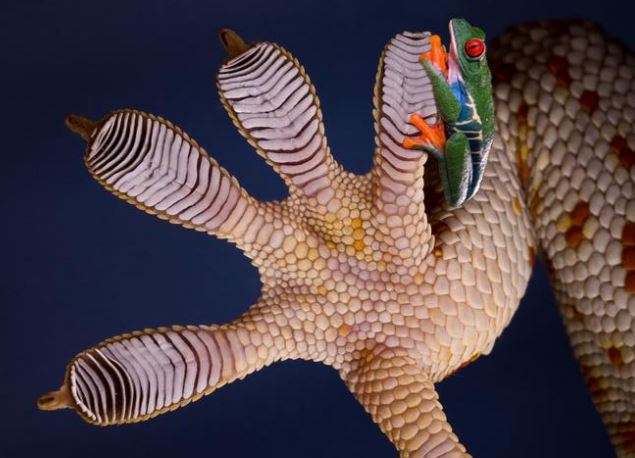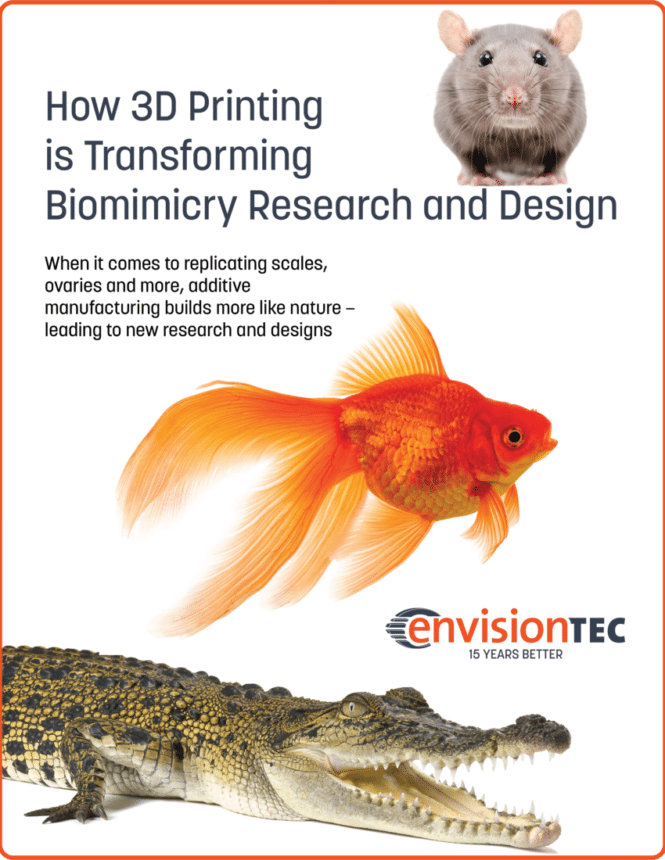
The Latest Research on Using 3D Printers to Imitate Nature
Tim van Broekhoven, an engineering student at the Delft University of Technology (TU Delft) in the Netherlands, used an EnvisionTEC 3D printer, the Perfactory 4 Mini XL, to print fiber structures using ABS-Tuff material to help produce his master thesis, “On the Mimicking of Geckos and Tree Frogs for Adhering to Soft Substrates.”
The goal of the work is to enhance understanding of soft-tissue grip, which can be a challenge in surgery and other areas. EnvisionTEC 3D printers are increasingly used in biomimetics research, largely because of the wide range of materials offered and the high accuracy of EnvisionTEC machines. Similar work has been done at McGill University’s Laboratory for Advanced Materials and Bioinspiration in Montreal, Canada, as well as Northwestern University, where a bioprosthetic mouse ovary was successfully produced on an EnvisionTEC 3D-Bioplotter.
As his abstract writes: “Grasping instruments used in clinical practice requires high pinch forces in order to generate sufficient grip for manipulating soft tissue without slipping.
In nature, several animals employ adhesion in order to grip on, not only hard, but also soft substrates. Among these animals, geckos and tree frogs are of special interest for engineered gripping systems, because of their high body mass. The toe pads of both animals are soft and characterized by a hierarchical pillar structure ranging from micro to nanoscale. Several research groups have mimicked this structure and demonstrated its potential for adhesive grip. Next to pillars, the toe pads of both animals possess a network of stiff inner fibers, which possibly also contributes to (friction) grip.
Aim: Inspired by the inner fiber network of geckos and tree frogs, the aim of this work was to investigate whether reinforcing a soft pad with stiff fibers increases friction on soft substrates as compared to a fiber-less pad. Our hypothesis was that provided that a soft exterior of such a pad establishes adhesive contact with the substrate, stiff fibers at a direction parallel to the substrate reduce the compliance of the pad in this direction, thereby preserving the established contact and thus increase the peak friction force.
Methods: Three experiments were conducted. In Experiment 1, composites consisting of 3D-printed fibers encapsulated in a polydimethylsiloxane (PDMS) pad were fabricated, and their adhesion and friction forces were measured. In Experiment 2, the friction of composites with stiffer 3D-printed fibers than those in Experiment 1 was measured. Lastly, in Experiment 3, the friction of composites consisting of a carbon fiber fabric encapsulated in PDMS of various stiffness degrees were tested. All experiments were conducted on both hard and soft gelatin substrates of various stiffness degrees, the latter functioning as soft-tissue phantoms.“
How Researchers are Using
3D Printers for Biomimetics





